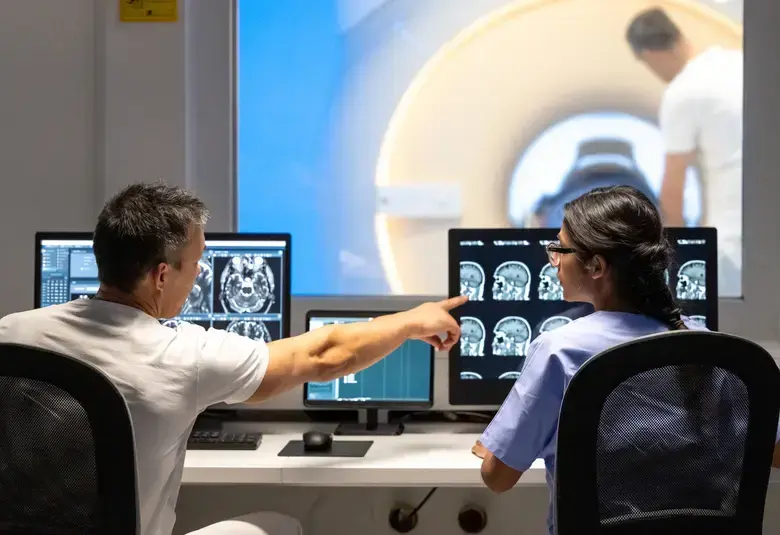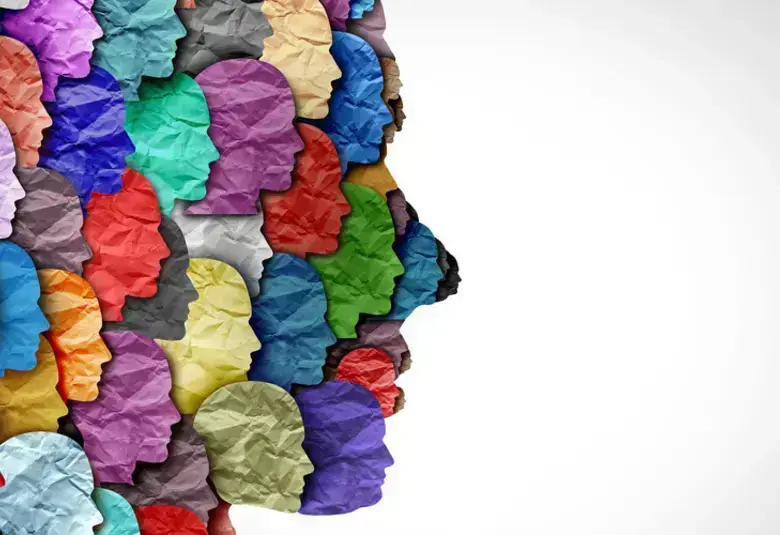Psychiatric diagnosis - according to DSM-5 - is largely based on psychiatric symptoms, with a great deal of symptom overlap between different disorders. The brain biology responsible for any one individual’s psychiatric illness has remained elusive. Big data analysis using powerful computing technologies is, however, now revealing defects in the brain’s neuronal networks and circuits in patients with psychiatric disorders. Four pioneering studies combining temporally dense multimodal phenotyping in large samples with sophisticated computational approaches were presented in an exciting session to an enthusiastic audience by experts leading the field at APA 2018.
DSM-5에 따른 정신과적 진단은 주로 정신증상을 바탕으로 이루어지며, 다른 질환과 중복되는 증상이 많습니다. 개인의 정신 질환을 일으키는 뇌의 생물학적 원인을 밝히는 것은 여전히 어렵습니다. 하지만, 강력한 컴퓨터 기술을 활용한 빅데이터 분석을 통해 정신질환 환자의 뇌신경 연결망과 회로의 결함을 파악해 나가고 있습니다. 2018년에 열린 APA 심포지엄에서는 해당 분야의 전문가들이 4가지 선구적 연구결과를 발표했는데, 이들은 고도의 컴퓨터 접근법을 적용하여 많은 표본에서 관찰된 일시적으로 밀집한 다중 표현형을 결합한 연구입니다.
One size doesn’t fit all
하나의 방식을 모든 경우에 적용할 수는 없습니다.
Considerable heterogeneity and overlap is seen in psychiatric diagnosis, said Alik Sunil Widge, Assistant Professor of Psychiatry, Harvard and Massachusetts General Hospital, MA. For example, a diagnosis of major depressive disorder (MDD) can be made using 256 different combinations of symptoms.
하버드 대학 및 메사추세츠 종합병원의 정신과 조교수인 Alik Sunil Widge에 의하면, 정신의학적 진단에는 상당한 이질성과 중복성이 있다고 합니다. 예를 들어, 주요우울장애(MDD)로 진단할 수 있는 증상들의 조합이 256가지에 달합니다.
A further limitation in psychiatric diagnosis and monitoring has been the dependence on self-reporting by patients and short consultations with the psychiatrist, he added.
또한, Widge 교수는 정신질환을 진단하고 모니터링할 때의 또다른 한계점으로 환자의 자발적 보고에만 의존하는 방식과 짧은 상담시간에 있다고 말했습니다.
To improve accuracy of diagnosis and management, it is necessary to know how patients are functioning in all their daily activities.
진단 및 관리의 정확성을 높이기 위해선 환자들이 일상생활에서 어떻게 활동하는지를 알아야 합니다.
Powerful computing technologies are changing the future of psychiatry
정신의학을 변화시킬 강력한 컴퓨터 기술
We need better tools to diagnose and monitor psychiatric illnesses, Dr Widge explained; and the solution to improving diagnosis is to apply unstructured approaches without assumptions and see how the data for different mental disorders cluster together.
Widge 박사는 정신 질환을 진단하고 관찰하기 위해 더 나은 평가법이 필요하다고 주장하였습니다. 또한 진단의 개선 방법으로, 추정하지 않고 서로 다른 정신질환의 데이터가 어떻게 융합되는지 살펴보는 열린 방식을 통해 이 문제를 해결할 수 있다고 말했습니다.
Watch what people do, not what they say
환자들이 본인의 증상에 대해 말하는 것에만 의존하지 말고 무엇을 하는지를 지켜보십시오.
Passive monitoring, using wearable technologies, can circumvent the current dependence on patient self-reporting, he added – watch what people do, not what they say, for example:
- voice prosody, sentiment and coherence
- activity, location, and social interactions
또한, 웨어러블(wearable) 기술을 활용하면 환자의 자발적 보고에 의존하는 한계점을 극복할 수 있다고 덧붙였습니다. 즉, 환자가 하는 말을 듣는 것을 넘어 환자가 실제로 무엇을 하는지 관찰할 수 있으며, 다음의 사항까지 파악할 수 있습니다.
- 목소리 운율, 감정과 일관성
- 활동, 위치, 그리고 사회적 상호작용
Interpreting rich psychiatric datasets
다양한 정신의학의 데이터 세트 해석
Bing Brunton is the first professor of Neural Engineering, University of Washington, WA, and gave an inspirational presentation on how to apply machine learning to rich psychiatric datasets to uncover structure within the clustering of psychiatric symptoms.
워싱턴 대학교의 초대 신경공학 교수 Bing Brunton은 "수많은 정신질환 증상들의 관련성을 밝히기 위해 기계 학습법을 정신의학의 방대한 데이터(rich dataset)에 적용하는 방법"에 대한 발표로 많은 영감을 주었습니다.
Interpretation enables formulation of hypotheses that can then be tested in clinical trials
해석은 추후에 임상시험에서 검증해볼 수 있는 많은 가설을 만들어냅니다.
Professor Brunton emphasized that it is easy to accumulate large quantities of multidimensional human data, such as a huge range of physical and behavioral characteristics in many forms – numbers, integers, categories. The limiting factors are asking the right questions and who can make sense of it.
Brunton 교수는 숫자, 정수, 범주와 같이 다양한 형태로 분류된 신체적. 행동학적 특징처럼 수많은 인체 정보(human data)를 대량으로 축적하는 것은 쉽다고 강조했습니다. 문제는 이에 대한 정확한 질문을 하는 것과 누가 그것을 이해할 수 있는가 입니다.
It is important to focus on what goes in and what comes out and be able to interpret the results meaningfully, she said – and then to validate the results and demonstrate their reproducibility. It is not necessary for users of algorithms to understand their mathematical basis.
Brunton 교수는 어떠한 정보를 입력하여 어떠한 결과가 출력되는지 그리고 그 결과를 의미 있게 해석하는 것에 집중하는 것이 중요하며, 결과를 검증하고, 재현성이 있는지를 증명하는 것은 그 이후의 일이라고 말했습니다. 또한 알고리즘 사용자가 수학적 기초사항을 이해할 필요는 없다고 덧붙였습니다.
Identifying data-driven types coherent across symptoms, brain and behavior, to inform treatment choice
뇌, 행동, 증상에 일관성이 있으며, 치료법 선택에 도움이 되는 “데이터 기반의 유형(data-driven types)” 규명
Leanne Williams, Professor of Psychiatry and Behavioral Sciences, Stanford University, CA, highlighted the current lack of opportunities to tailor and individualize psychiatric interventions due to the current “one size fits all” approach to psychiatric diagnosis.
스탠포드 대학교 정신의학과 행동과학 분야의 Leanne Williams 교수는, 현재 사용하고 있는 정신과 진단법은 “두루 적용되도록” 고안되었기 때문에, 환자 개인에 맞춰 문제를 진단하고 해결하는 것이 어렵다고 강조했습니다.
Big data analysis promises individualization of psychiatric interventions
빅데이터 분석을 통해 정신질환도 환자맞춤형 치료법 제시가 가능할 것입니다.
Can we identify data-driven types that are coherent across symptoms, brain and behavior, and relevant to informing treatment choices? she asked.
Williams 교수는, “뇌와 행동, 증상 전반에 걸쳐 일관되며, 치료법을 선택할 때 도움이 될 수 있는 데이터 기반의 유형 규명이 가능할까요?”라고 질문했습니다.
Professor Williams and her team analyzed extensive data from 420 participants – 100 with MDD, 53 with panic disorder, 47 with post-traumatic stress disorder and 220 healthy controls.1 Integration of the data and factor analysis of symptom items identified three coherent dimensions:
- anhedonia
- anxious arousal
- tension
Williams 교수와 연구진은 420명의 참가자로부터 광범위한 자료를 수집하여 분석했습니다. 420명의 참가자는 주요 우울장애환자 100명, 공황장애 53명, 외상 후 스트레스장애 47명 및 200명의 건강한대조군으로 구성되었으며, 자료를 취합하고 증상의 요인을 분석하여 서로 밀접하게 연관되어 있는 세 가지 항목을 규명했습니다.
- 성욕장애
- 불안각성
- 긴장
Six cluster subtypes were also identified:
- normative mood
- tension
- anxious arousal
- general anxiety
- anhedonia
- melancholia
아래의 6 가지 하위 항목들도 추가 확인되었습니다.
- 규범적 기분(normative mood)
- 긴장
- 불안각성
- 범불안
- 성욕장애
- 우울감
A step toward disentangling symptom overlap and identifying subtypes
증상들이 중복되어 진단이 어려운 문제를 해결하고, 하위 항목들을 구분함으로써 한 단계 나아가고 있습니다.
These cluster subtypes clustered in symptoms profiles, but did not map onto diagnoses, and differed in cognitive behavior and brain activation.1
위의 여섯 가지 하위항목들은 증상 프로파일로 취합되었으나, 진단과 연관되지는 않았고, 인지행동과 뇌 활성에 있어서는 다른 양상을 보였습니다.1
These findings are a step toward disentangling the symptom overlap in our current diagnoses and identifying subtypes that are coherent across specific symptoms and specific brain-behavior profiles, explained Professor Williams. This is necessary to guide tailored treatment choices.
Williams 교수는 이러한 연구 결과가 지금의 진단법에서 확인되는 증상의 중복을 해결하고, 특정 증상과 특정 뇌-행동 양상에 걸쳐 일관된 하위항목을 규명하는 단계라고 설명했습니다. 이 단계는 개인 맞춤형 치료법을 선택할 때에도 필수적입니다.
A behavioral fingerprint that can be related to therapy
치료와 관련된 행동적 특성
Justin Taylor Baker, Center for Law, Brain and Behavior, Massachusetts, MA, described intensive, longitudinal, geospatial monitoring of patients with bipolar disorder using wearable technology.
매사추세츠 주 Law, Brain and Behavior 센터의 Justin Taylor Baker는 웨어러블 기술을 이용한 집중적, 종적, 특정 지역에서의 양극성장애 환자 집중 모니터링에 대해 설명했습니다.
The resulting, highly-detailed individual participant timelines provide valuable insights into all activities of daily life, he explained. Robust and reproducible predictors capturing how mood and cognitive fluctuations vary from individual to individual and from episode to episode in affective and psychotic illnesses can then be developed and related to therapy.
이를 통해 얻게 되는 참가자 개개인의 아주 세밀한 타임라인은 일상생활의 모든 활동에 있어서 중요한 통찰력을 제공한다고 설명했습니다. 또한, 이를 바탕으로 정서적 질환 및 정신질환에서 개인별, 에피소드별로 다르게 나타나는 기분과 인지의 변화를 확인할 수 있는 탄탄하고 재현성 있는 예측 인자가 개발될 가능성이 있으며, 나아가 정신질환의 치료로 이어질 수 있다고 덧붙였습니다.
Longitudinal data revealing the emergence of psychosis
정신질환의 발병을 설명하는 종적 연구결과
Raquel E. Gur, Professor of Psychiatry Neurology and Radiology, University of Pennsylvania, PA, described the work she has carried out with her team on the Philadelphia Neurodevelopment Cohort (PNC).
펜실베니아 대학의 정신 신경학 및 방사선과 Raquel E. Gur 교수는, 필라델피아 신경개발 코호트(Philadelphia Newrodevelopment Cohort, PNC)에서 연구진과 함께 밝혀낸 연구 결과를 설명했습니다.
In order to better understand the prodromal nature of early psychosis, Dr Gur’s lab undertook genotyping coupled with extensive clinical and neurocognitive phenotyping in a large sample of participants; a subsample of which also underwent neuroimaging – structural MRI, diffusion tensor imaging, functional MRI, arterial spin labeling.2-3
초기 정신병 전구 증상의 본질을 좀 더 이해하기 위해, Gur 교수 연구팀은 대규모 참가자를 대상으로 유전형질 분석과 함께 광범위한 임상적 및 신경인지적 표현형 분석을 수행하였습니다. 참가자들 중 일부는 구조적 MRI, 확산텐서영상(diffusion tensor imaging), 기능적 MRI 및 동맥스핀라벨링(arterial spin labeling)과 같은 신경 촬영도 수행하였습니다.2-3
Dimensionality reduction subdivided symptoms into four domains – anxious-misery, fear, behavioral, psychosis. These differed by sex, in relation to each other, and to brain structure and function. Comorbidity was common in the dimensions of psychopathology.2
차원 축소를 통하여 증상을 우울-비참함, 두려움, 행동학적 및 정신적 등 총 4 개의 영역으로 세분화하였습니다. 이들은 성별, 상호관계, 뇌 구조와 기능에서 차이를 보였습니다. 동반이환은 정신병리학 차원에서 흔하게 나타났습니다.2
Participants with psychotic disorder had diminished whole-brain gray matter volume and expanded white matter volume compared with participants without significant psychopathology, Professor Gur explained. They had significantly lower gray matter volume in the medial temporal lobe and frontal, temporal, and parietal cortex; and volumetric reduction in the medial temporal lobe correlated with symptom severity.3
Gur 교수는 정신질환을 가진 참가자들의 뇌와 뚜렷한 정신병리학적 소견을 보이지 않은 참가자들의 뇌를 비교하자, 정신질환자의 뇌 전체에 걸쳐 회백질 부피가 줄어들었으며, 백질 용적이 늘어난 것을 설명했습니다. 정신질환자의 뇌는 내측두엽, 전두엽, 측두엽 및 두정엽에서 회백질 부피가 현저하게 작았으며, 증상의 중증도와 내측두엽의 부피 감소는 상관관계가 있었습니다.3
Professor Gur also presented her recent unpublished work demonstrating the impact of the environment on early psychosis.
Gur 교수는 아직 발표되지 않은 자료이지만, 정신병 초기의 환경적 영향을 설명하는 최근 연구를 설명하기도 했습니다.
Big data is here to stay
바로 이곳에 빅데이터(Big data)가 존재합니다.
The studies presented in this symposium provide just a glimpse into the multi-faceted approaches and opportunities that big data will and has already begun to play in psychiatric diagnosis and care.
이 심포지엄에서 발표된 연구들은 빅테이터가 제공할 다양한 접근법과 기회, 그리고 이미 시작된 역할의 일부일 뿐이며, 앞으로 빅데이터는 정신의학의 진단과 치료에 있어서 더욱 많은 영향을 줄 것으로 기대됩니다.
본 자료는 Global Lundbeck 의학부에서 선별한 학술대회 콘텐츠이며, 한국룬드벡의 의견과 다를 수 있습니다




